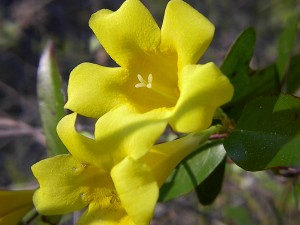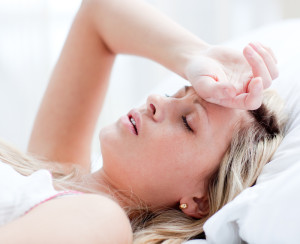Recently, a 26 year-old woman with nine years experience in dental nursing joined our practice. After a few weeks working together, it emerged that she was in fact a dental phobic and that she had been suffering with severe toothache on and off for several months, but had been putting off treatment, resorting to painkillers. When I asked her why she felt so frightened, she would reply that she knew what would happen, or that the tooth would break during the procedure (anticipatory anxiety) and that was enough to make her cancel or postpone her appointment at the last minute with her own dentist. She admitted that she had not had any unpleasant experiences but found the whole event very distressing and a daunting ordeal.
Eventually, she let me have a look and I took some x-rays. She had multiple cavities but the severe pain was due to gross unrestorable caries in an upper wisdom tooth which required extraction. However, she declined treatment because she could cope with the pain, even though she knew that the problem would not go away and that action was required.
One morning, she came in to work saying that she had had very little sleep the previous night because of her toothache and that she was ready to have the extraction. Once sat in the dental chair, she felt great anxiety in her tummy and holding her abdomen screamed: “Oh, I’ve got awful butterflies in my tummy just thinking about it.” She then excused herself to go to the toilet. Upon her return, she asked if she could have the treatment in the afternoon as she did not want to miss her lunch having had no breakfast. Come the afternoon, she said the pain had gone. A similar sequence of events happened on several occasions, with the patient using different excuses such as feeling very weak and trembling and that she could not go through with it, or having a bad dull headache.
One day when again I could see the same story unfold, I suggested that I could give her a homeopathic remedy to calm her nerves. She was very sceptical about homeopathic treatment but was desperate to get some help as she could not face another sleepless night. I gave her Gelsemium 30c pillules half-hourly and reassured her that I would not administer the local anaesthetic unless she felt relaxed.
After a few doses, much to her amazement, she had calmed down and I was able to anaesthetise the tooth. Again, she felt the need to use the toilet which made her feel better. The extraction was not quite routine but she managed well and the tooth was delivered whole. I gave her Arnica 30c to use three times daily for the next few days. She was very relieved and admitted that she felt surprised at how much better she felt and how she had coped with the whole situation after taking the Gelsemium. She said that “it felt similar to having laughing gas (nitrous oxide and oxygen) which was given to her during childbirth. She then voluntarily booked herself some more appointments to have the outstanding treatment completed.
Gelsemium the flower

Gelsemium sempervirens is a yellow flowering plant native to North and Central America and found in coastal regions in moist woodlands from Virginia to Mexico. It is a very attractive creeper that can climb up host trees to a great height, often hanging in tresses from one to the other. It is evergreen with a woody, twining stem which contains a milky juice and bears opposite, shining and evergreen lancet shaped leaves and clusters of from one to five large funnel-shaped fragrant yellow flowers in early spring. The flowers are hermaphrodite (have both male and female organs) and are pollinated by insects. The fruit is composed of two separable, jointed pods containing numerous, flat winged seeds. The roots form runners, a stem or rhizome that can extend great distances underground before shooting up as another plant.
Gelsemium is also called yellow jasmine, false jasmine, Caroline jasmine and wild woodbine. Its name comes from the Italian word gelsomino, meaning jasmine and is not to be confused with the true yellow jasmine of Madeira which is also known as gelseminum but has only two stamens whereas gelsemium has five.
All parts of the plant contain toxic alkaloids, the two main ones are gelseminime and gelsemine. Gelseminime is a yellowish, bitter amorphous alkaloid that is readily soluble in alcohol to form amorphous salts. Gelsemine is a colourless, odourless, intensely bitter alkaloid that is sparingly soluble in water, forming crystalline salts. The rhizome also contains gelsemic acid, a tasteless, crystalline substance which exhibits an intense bluish-green fluorescence in alkaline solution.
History
The root of this plant has been used since the days of the early settlers in America as a cure for fevers. During the American Civil War, it was largely used as a substitute for opium as a narcotic. The plant was first described in 1640 by John Parkinson who grew it in his garden from seeds sent by Tradescant from Virginia.
The medical history of this plant is quite recent. It is believed to have gained attention through the mistake of a servant of a Mississippi planter who was afflicted with fever. This servant gave his master a decoction of gelsemium root, instead of the garden plant intended. After partaking of an infusion, serious symptoms arose, but contrary to expectations, he recovered, free from fever which did not recur. It was clear that the attack of bilious fever from which he had been suffering had disappeared.
This accidental error led to the preparation from the plant of a proprietary medicine called the “Electrical Febrifuge”. Later, in 1849, Dr Porcher brought Gelsemium to the notice of the American Medical Association, Dr Henry in 1852, and many others after him, made provings of it; the main one being that of Dr Hale, whose Monograph on Gelsemium was a great help in the knowledge of this drug.
Gelsemium poisoning
The prominent and universal symptom is paralysis of the motor nerves as it is a powerful spinal depressant, its most marked action being on the anterior columns of the grey matter in the spinal. Poisonous doses produce a sensation of languor, relaxation, muscular weakness and paralysis. The face becomes anxious, the temperature subnormal, the skin cold and clammy and the pulse rapid and feeble. Dropping of the upper eyelid and lower jaw, internal squint, double vision and dilatation of the pupil are prominent symptoms.
Later, the toxic effects cause the sphincters to relax, the anus and urethra stay open. Respiration becomes slow and feeble, shallow and irregular, and death occurs from respiratory failure, the heart stopping almost simultaneously. The drug also acts through the vasomotor nerves to produce passive venous and arterial congestion. Also, the drug has an affinity for the mucous membranes, giving rise to catarrhal inflammation.
Homeopathic use
In its Homeopathic form, Gelsemium is prepared from the fresh root, which is chopped, soaked in alcohol, drained and diluted/succussed to the required potency.
The keynote of Gelsemium sempervirens is weakness. There is mental and physical paralysis. There is slow and gradual complete prostration with drowsiness, low grade fever and a dull headache. The patient is lethargic and reclusive, preferring to be left alone.
Symptoms are better from bending forward, profuse sweating and urinating, being in the open air, gentle and continual motion and with stimulants.
Symptoms are worse from change of weather, change of season, anticipation of performing, mental exertion, physical exertion, tobacco smoke, damp weather, bad news, before a thunderstorm and from emotions or excitement.
Homeopathy and fear of dentists
Dental anxiety is probably the most common reason for non-attendance at the dental surgery. When assessing anxiety for homeopathic repertorisation, I find it useful to consider the type of anxiety, what triggers the anxiety, when it is felt, where it is felt, any concomittant symptoms, where these are felt and any aggravating/ameliorating factors.
I have used Gelsemium on several occasions to manage acute dental anxiety. Other very effective anxiety remedies, some of which I use, are:
- Aconitum napellus: heart palpitations, sudden panic, dry mouth, dilated pupils, the sensation of sudden shock, the “white knuckle” syndrome patient. The anxiety is very short-lasting and of very quick onset.
- Arsenicum album: chronic anxiety. It is indicated in very chilly and fastidious people who have profound anxieties about their health and may experience burning pains that are better with heat.
- Argentum nitricum: patient is excited, hurried, hyperactive and talkative.
- Coffea cruda: patient is over-enthusiastic, sleepless (mind: full of thoughts), excessively sensitive to pain and to noise, even music.
- Ignatia amara: patient may display hysterical behaviour, twitching of the muscles of the face and lips, is hypersensitive to smells, especially cigarette smoke or coffee, and sometimes has a sensation of a lump in the throat (globus hystericus). It is especially useful in the “have never been well since” cases of emotional trauma.
I find that Arnica montana and Hypericum perforatum are compatible with the above anxiety remedies and I sometimes use them concurrently after a dental procedure.
I used Gelsemium in this case because of the butterflies in stomach description of the anxiety, the weak trembling hands, the nausea and nervous diarrhoea symptoms. Gelsemium is also very useful for influenza sufferers, where there is a gradual low grade fever, and in nervous diarrhoea cases, for example, prior to examinations or public speaking. It is also a very important polychrest and constitutional remedy.





Leave a Comment